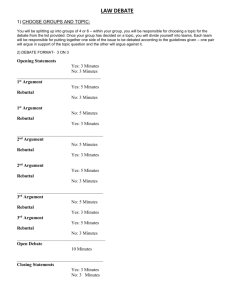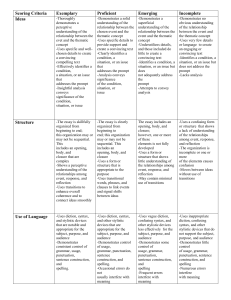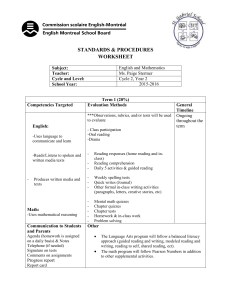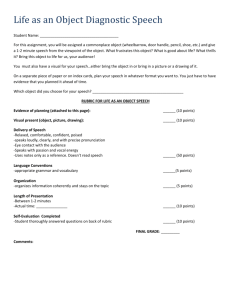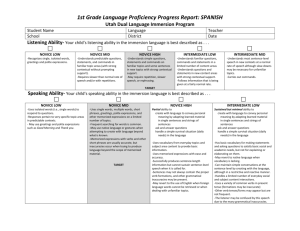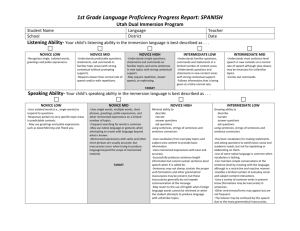Flash Cards
advertisement
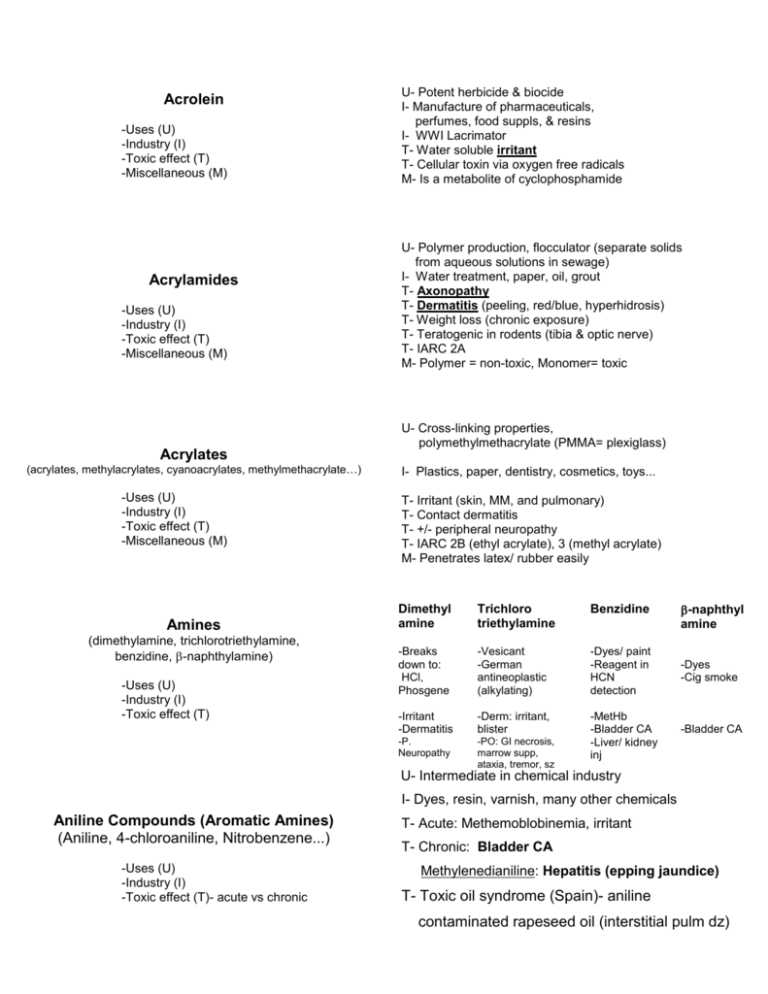
Acrolein -Uses (U) -Industry (I) -Toxic effect (T) -Miscellaneous (M) Acrylamides -Uses (U) -Industry (I) -Toxic effect (T) -Miscellaneous (M) Acrylates (acrylates, methylacrylates, cyanoacrylates, methylmethacrylate…) -Uses (U) -Industry (I) -Toxic effect (T) -Miscellaneous (M) Amines (dimethylamine, trichlorotriethylamine, benzidine, -naphthylamine) -Uses (U) -Industry (I) -Toxic effect (T) U- Potent herbicide & biocide I- Manufacture of pharmaceuticals, perfumes, food suppls, & resins I- WWI Lacrimator T- Water soluble irritant T- Cellular toxin via oxygen free radicals M- Is a metabolite of cyclophosphamide U- Polymer production, flocculator (separate solids from aqueous solutions in sewage) I- Water treatment, paper, oil, grout T- Axonopathy T- Dermatitis (peeling, red/blue, hyperhidrosis) T- Weight loss (chronic exposure) T- Teratogenic in rodents (tibia & optic nerve) T- IARC 2A M- Polymer = non-toxic, Monomer= toxic U- Cross-linking properties, polymethylmethacrylate (PMMA= plexiglass) I- Plastics, paper, dentistry, cosmetics, toys... T- Irritant (skin, MM, and pulmonary) T- Contact dermatitis T- +/- peripheral neuropathy T- IARC 2B (ethyl acrylate), 3 (methyl acrylate) M- Penetrates latex/ rubber easily Dimethyl amine Trichloro triethylamine Benzidine -Breaks down to: HCl, Phosgene -Vesicant -German antineoplastic (alkylating) -Dyes/ paint -Reagent in HCN detection -Irritant -Dermatitis -Derm: irritant, blister -P. Neuropathy -PO: GI necrosis, marrow supp, ataxia, tremor, sz -MetHb -Bladder CA -Liver/ kidney inj -naphthyl amine -Dyes -Cig smoke -Bladder CA U- Intermediate in chemical industry I- Dyes, resin, varnish, many other chemicals Aniline Compounds (Aromatic Amines) (Aniline, 4-chloroaniline, Nitrobenzene...) -Uses (U) -Industry (I) -Toxic effect (T)- acute vs chronic T- Acute: Methemoblobinemia, irritant T- Chronic: Bladder CA Methylenedianiline: Hepatitis (epping jaundice) T- Toxic oil syndrome (Spain)- aniline contaminated rapeseed oil (interstitial pulm dz) U- Airbag accelerant; pesticde, explosives Azides -Uses (U) -Industry (I) -Toxic effect (T) Bromide Compounds -Uses (U) -Industry (I) -Toxic effect (T) -Miscellaneous (M) I- Labs and manufacturing plants T- Cellular asphyxiant, resp failure/ pulm edema T- Eye irritant U- Photographic, hot tub chemicals, fumigants... T- Crosses membrane faster than Cl, replacing Cl causing sedation/ neuropsych. T (chronic)- agitation, acne (30% facial), axonopathy T- Breast milk- neonatal bromism (poor growth, cranial abnormal) M- Low anion gap (false high Cl) U- Plastics (ABS plastic), tobacco smoke I- Tires Butadienes -Uses (U) -Industry (I) -Toxic effect (T) T- Irritant (skin and mucous membranes) T- Simple asphyxiant T- IARC 2A (lymphohematopoetic, testicular, thyroid, mammary) U- Volatile organic solvent Carbon Disulfide -Uses (U) -Industry (I) -Toxic effect (T)- acute vs chronic I- Cold vulcanization of rubber, rayon T- Acute: Irritant (defatting) T- Chronic: 1. Distal axonopathy 2. Optic nerve (resembles optic neuritis) 3. CV (HTN, CAD) 4. Repro (SAB, prematurity, decreased libido) Chlorates (sodium, posassium, calcium sodium chlorate) -Uses (U) -Industry (I) -Toxic effect (T) -Miscellaneous (M) U- Oxidizer, pesticide, explosives, bleach paper T- Oxidizer= MetHb, hemolysis, renal failure M- FYI- Perchlorates Also oxidizers but more stable Coal Tar Products (wood creosote, coal tar creosote) -Sources -Uses (U) -Toxic effect (T) Sources: wood creosote= beach wood (phenol, cresols, guaiacols, xylenols) coal tar creosote= by-product of coal tar (85% polycyclic aromatic hydrocarbons (PAH)) U- Wood: disinfectant, laxative, expectorant Coal tar: wood preservative (railroad ties), Rx psoriasis T- Dermal irritant, pulmonary= restrictive/ obstructive Cancer d/t PAH (lung, oral, stomach, bladder, scrotal, skin) U- Hydrazine= Rocket fuel (reducer), making insecticides, Diamines (diamine, hydrazine, toluene-2,4-diamine...) -Uses (U) -Toxic effect (T) -Miscellaneous (M) plastics, rubber. O-phenylenediamine= henna & all hair dyes... T- Irritant/ sensitizer (dermal & pulmonary), lupus-like T- Hydrazine=Gyromitra=INH (seizures, renal & liver damage, hemolysis) M- Treat seizures with pyridoxine Dibromochloropropane (DBCP) -Uses (U) -Toxic effect (T) -Miscellaneous (M) Dimethylacetamide (DMAC) -Uses (U) -Toxic effect (T) -Miscellaneous (M) U- Pesticide (D/C’d in 1970’s) T- Dermal / ocular irritant T- Testicular (aspermia, oligospermia) De Balls Can’t Produce (DBCP) U- Paint remover, solvent for plastics (dissolves PVC) T- Potent hepatotoxin: LFT, jaundice, hepatomegaly, liver necrosis/ failure T- Irritant: esophagitis, conjunctivitis, dermal burn “Universal Solvent” Dimethylformamide (DMF) -Uses (U) -Industry (I) -Toxic effect (T) -Miscellaneous (M) U- Penetrates most plastics (makes them swell) I- Acrylic fiber production, paint strippers Vehicle for transdermal drug delivery T- Potent hepatotoxin (CLN, steatosis) T- Disulfiram rxn T- Pulm irritant U- EXPLOSIVES, spandex, dyes T- Retrobulbar neuritis & optic neuropathy Dinitrobenzene -Uses (U) -Toxic effect (T) -Miscellaneous (M) D/C exposure= gradual recovery T- MetHb (potent) T- Subacute hepatic necrosis, aplastic anemia M- May have bitter almond odor, yellowing skin, hair, eyes U- EXPLOSIVES, diisocyanate production, dyes Dinitrotoluene (DNT) -Uses (U) -Toxic effect (T) -Miscellaneous (M) T- Uncouples oxidative phosphorylation T- MetHb T- Hemolytic anemia T- Retrobulbar & optic neuropathy M- Turns skin yellow U- Fumigant, solvent Epichlorohydrin I- Production of dye, lubricants, adhesives, drugs T- Strong Irritant: respiratory, dermal, ocular -Uses (U) -Industry (I) -Toxic effect (T) -Miscellaneous (M) T- Nephrotoxicity, CNS depression, hypotension M- Penetrates rubber M- Sweet, chloroform odor has poor warning property U- Fumigant (grain- banned 1948), fire Ethylene Dibromide (EDB) -Uses (U) -Toxic effect (T) -Miscellaneous (M) extinguishers, lead scavenger in gasoline T- Hepatotoxicity (GSSH depletion) T- Strong irritant (dermal, pulmonary) M- Animal (only) carcinogen: hemangiosarcoma, nasal cavity CA Ethylenediamine (EDA) -Uses (U) -Toxic effect (T) -Miscellaneous (M) U- Dyes, solvent, emulsifier (skin creams/ latex) T- Sensitizer (contact derm, occ asthma) T- Occupational asthma T- MetHb U- NaF: electroplating, toothpaste/ water additive Fluoride Compounds (sodium, hydrogen, ammonium fluoride) -Uses (U) -Toxic effect (T) -Miscellaneous (M) HF: cleaning brick/ rust, glass etching T- Chelates divalent cations (Ca++, Mg++), results in Mg/ Ca, K = ventricular fibrillation T- Chronic= fluorosis: bone density, calcification of ligaments, hyperostosis, white-brown dental spots (axial osteosclerosis/ nerve comp) Fuels -Uses (U) -Industry (I) -Toxic effect (T) -Miscellaneous (M) Hexachloro-1,3-Butadiene (HCBD) U- Energy-producing hydrocarbons T- PULMONARY (pneumonitis) M- Jet fuels (kerosene, benzene, xylene, toluene) JP-7 & JP-8 pure kerosene U- Heat transfer liquid (transformers/ hydraulic fluid) U- Fumigant in vineyards (don’t confuse with Bordeaux= copper sulfate) -Uses (U) -Toxic effect (T) -Miscellaneous (M) T- Irritant (Dermal, Occular, Pulmonary hemorrhage) T- Hepatic fatty degeneration T- Renal tubular necrosis, tubular adenomas U- Producing polyurethane polymers Isocyanates (e.g. toluene diisocyante- TDI) -Uses (U) -Toxic effect (T) -Miscellaneous (M) Maleic Anhydride -Uses (U) -Industry (I) -Toxic effect (T) -Miscellaneous (M) U- Methylisocyanate (MIC)- production of carbamates T- TDI: #1 Occupational asthma (HP) T- MIC: Major irritant (pulm, derm, ocular) M- MIC (Bhopal, India)- >2000 dead from pulmonary edema U- Enamels, bonding, synthesis of malathion T- Allergic sensitizer (occupational asthma) Hypersensitivity pneumonitis (HP)= extrinsic allergic alveolitis= Immunologic T- Irritant (dermal, ocular) Mercaptans Chemicals with a –SH group (Noxious) U- Odorant (natural gas) -Uses (U) -Industry (I) -Toxic effect (T) -Miscellaneous (M) U- Intermediate in synthesis of fuels, pesticides… T- Irritant (derm, MM, respiratory) T- MetHb & hemolysis (worse in G6PD) Methylene Diamine (MDA) -Uses (U) -Industry (I) -Toxic effect (T) -Miscellaneous (M) See Hydrazines in Diamine section Chemicals with a –CN Nitriles (acetonitrile, propane nitrile, butanenitrile) -Uses (U) -Toxic effect (T) -Miscellaneous (M) U- Solvents (eg. artificial nail remover), reagents T- Liberation of –CN Cellular asphyxiant T- Irritants (derm, MM, ocular), simple asphyxiant in high concentration M- Prolong observation for delayed CN toxicity O-Phenylenediamine (OPD) P-Phenylenediamine (PPD) *This compound is also listed under “Diamines”* U- OPD: dyes, fungicides, vet antihelminthic U- PPD: hair dyes and henna tattoos -Uses (U) -Toxic effect (T) T- OPD=severe urticaria/dermatitis (eye blindness) T- PPD= bladder cancer Phosphorus/ phosphides -Uses (U) -Toxic effect (T) -Miscellaneous (M) U- Making phosphates, detergents, fertilizer, match tips (red) U- Zn & Al phosphide: Insecticides, rodenticides T- Yellow: strong oxidizer, causes burns (Red is benign) T- Ingestion: 1. “smoking”, glowing stool, smells of garlic 2. Asymptomatic (hrs-weeks) 3. Hepatic/ renal failure T- Chronic: “Phossy Jaw”- mandibular necrosis T- Phospine gas: cellular asphyxiant + pulm edema + #3 U- Plasticizing for vinyl, used in plastics… Phthalates -Uses (U) -Toxic effect (T) T- Controversial whether phthalates have health effects. Some claim association with asthma, “sickbuilding syndrome”, or endocrine problems but little supporting data T- Diethylhexyl Phthalate (DEHP)= occ asthma I- Diverse group of plastics Polymers One class= Fluoropolymer plastics: polytetrafluoroethylene (PTFE = Teflon) -Industry (I) -Toxic effect (T) T- Polymer Fume Fever (heating polymers) -Pulm irritant, flu-like syndrome (similar to MFF) -Resolves in 24-48 hrs Resins -Uses (U) -Toxic effect (T) -Methylenedianiline -Anhydrides Resins = Plastics Combustion can liberate: CO, CN, phosgene Methylenedianiline –toxic hepatitis (Epping Jaundice) Anhydrides – occupational pneumonitis U- Used in plastics, styrofoam, insulation, paint Styrene -Uses (U) -Toxic effect (T) T- “Styrene Sickness”: HA, fatigue, weakness, feeling intoxicated after exp to vapor T- Peripheral neuropathy T- CNS (balance, memory, color vision) T- Chronic: Hearing loss Trimellitic Anhydride -Uses (U) -Industry (I) -Toxic effect (T) -Miscellaneous (M) U- Plasticizer for polymers (PVC) T- Sensitizer/ irritant; 4 syndromes: 1. Asthma/ rhinitis (IgE) 2. Irritant syndrome (dust/ fumes) 3. Late respiratory systemic syndrome (LRSS) “Trimellitic Flu”- Like MFF, 4-12 hours after shift 4. Hypersensitivity pneumonitis; hemolytic anemia “Pulmonary disease- anemia” (PDA) Dyspnea, cough, hemoptysis, anemia May lead to restrictive lung dz; pulm hemosiderosis U- Plasticizer in lacquer, hydraulic fluid Triorthocresyl phosphate (TOCP) -Uses (U) -Industry (I) -Toxic effect (T) -Miscellaneous (M) T- Weak AchE inhibitor (like organophosphate) Inhibits neuro-target-esterase (NTE) T- Delayed sensory-motor neuropathy “O-P ester induced delayed neurotoxicity (OPIDN)” M- Jamaican Ginger (Jake) contaminated by TOPC “Jake Walk”= Jake leg paralysis M- Morocco: OPIDN after TOCP adulterated cooking oil Xylidine -Uses (U) -Industry (I) -Toxic effect (T) -Miscellaneous (M) Irritants U- Making dyes/ pharmaceuticals, gas additive… T- Acute: MetHb, cyanosis, intoxication T- Chronic: Liver/ renal damage (animals) - Acrolein - Acrylates - Epichlorohydrin - Ethylene Dibromide (EDB) - Ethylenediamine - Methylisocyanate (MIC) - Mercaptans -Many more -So many, decide if this category works for you... -Acrylamides (2A) -Aromatic Amines (Benzidine, -naphthylamine) (1): bladder -Aniline (1): bladder -P-Phenylenediamine (PPD): bladder, leukemia Cancer-Causing -Butadienes (2A): lymphohematopoetic -Coal tar: lung, oral, stomach, bladder, scrotal, skin -Vinyl Chloride: Liver -CCl4: Liver Neuropathy -Axonopathy (A) -Myelinopathy (M) -Neronopathy (N) -Acrylamide (A) -Bromide (Methyl) (A) -Carbon disulfide (A) -Styrene (?) -TOCP -Trichloroethylene (M) -Acrylamides (tibial & optic nerve degeneration) -Carbon disulfide (Heart, CNS, craniofacial) Teratogens (Misc Tox Agents Only) IARC Classification Groups: 1, 2A, 2B, 3, 4 Disasters -Toxic oil syndrome -Bhopal, India -Jake leg paralysis -Morocco Hepatotoxins (Misc Tox Agent Only) MetHb Inducers Others not in misc tox class: PCB’s (cola-colored skin, IUGR, skull calcifications Methylmercury Carbon monoxide Group 1 Group 2A Group 2B Group 3 Group 4 Carcinogenic to humans Probably carcinogenic to humans Possibly carcinogenic to humans Not classifiable... to humans Probably not carcinogenic to humans - TOS: Spain, 1982. Rapeseed oil denatured with aniline. Caused pulmonary disease - Bhopal, India: Union Carbide release of MIC - Jake leg paralysis, prohibition: TOCP contaminated Jamaican Ginger extract -Morocco 1960: TOCP adulterated cooking oil -Methylenedianiline: Hepatitis (epping jaundice) -Dimethylacetamide (DMAC): Necrosis, jaundice -Dimethylformamide (DMF): CLN, steatosis -Hexachloro-1,3-Butadiene (HCBD): fatty degen -Phosphorus (yellow or white) -Xylidine (in animals; also renal damage) -Methylenedianiline: Hepatitis (epping jaundice) -Chlorates -Dinitrobenzene (potent) -Dinitrotoluene (DNT) -Ethylenediamine -Mercaptans -Xylidine - Acrylamides: dermatitis (peeling, red/blue, hyperhidrosis) Sensitizers (skin= contact dermatitis) Sensitizers (Pulm= occ asthma) - Epichlorhydrin: contact dermatitis - O-Phenylenediamine (OPD): severe dermatitis Acrylates: Contact dermatitis - Anhydrides: occupational pneumonitis (HP) - Maleic Anhydride: Allergic & hypersensitivity pulm dz - Trimellitic Anhydride: Asthma, “Trimellitic Flu” (HP) - Ethylenediamine (EDA): occup asthma, contact dermatitis - Toluene diisocyante (TDI)/ isocyanates: (#1 occ asthma) - Diethylhexyl Phthalate (DEHP): occ asthma **See Also “Sensitizers” for overlap** Hypersensitivity Pneumonitis (HP) HP refers to immune-mediated lung disease from exogenous agents= extrinsic allergic alveolitis: -Isocyanates (TDI, MDI) -Anhydrides (TMA, phthalic anhydride= epoxy lung) -Pyrethrum
